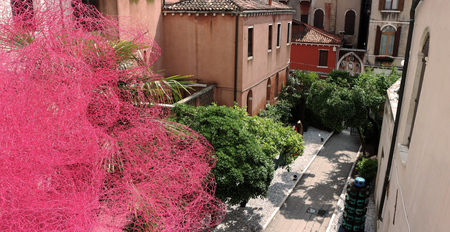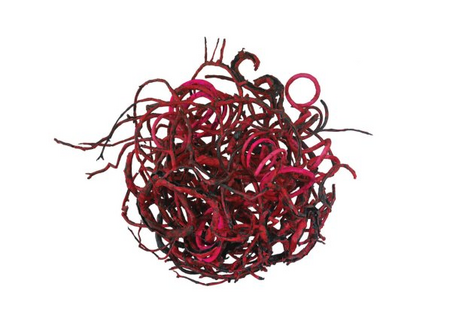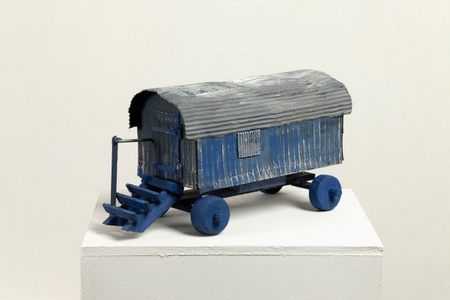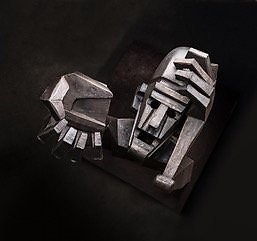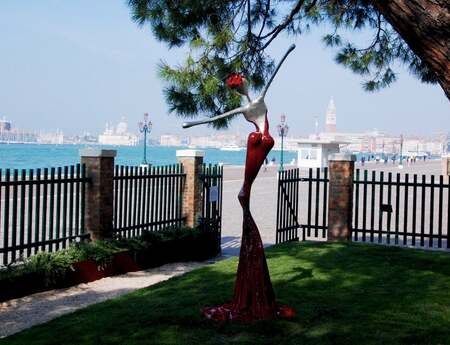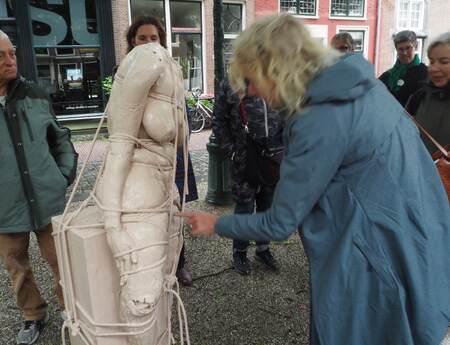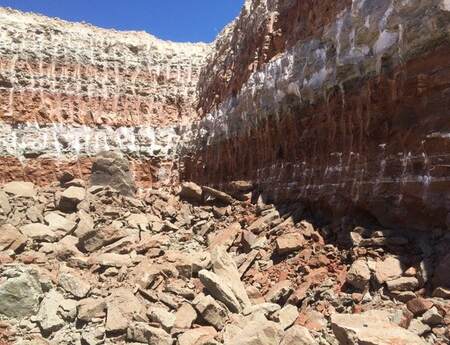PERSONAL STRUCTURES and the Question of Identity: Palazzo Mora (Part 1)
It's already started! Venice welcomes its guests to the 5th edition of the Personal Structures art exhibition. Eight sculpture network members are involved in the exhibition this year. Here you can find out who they are, and get a taste and a feeling for their work.
It's that time again:From 11 May to 24 November 2019, the Biennial art exhibition Personal Structures, hosted by the ECC (European Cultural Centre), will take place under the motto "Identity". As usual, the venues will be Palazzo Mora, Palazzo Bembo and Giardini Marinaressa. The aim is to present a heterogeneous and stimulating group show that will stimulate new thoughts and associations about our common life on earth.
Palazzo Mora is located in Sestier Cannaregio between San Felice and the Canal di Noal. Five sculpture network members are participating in the exhibition there this year. They gave us a small foretaste of what to expect at Palazzo Mora.
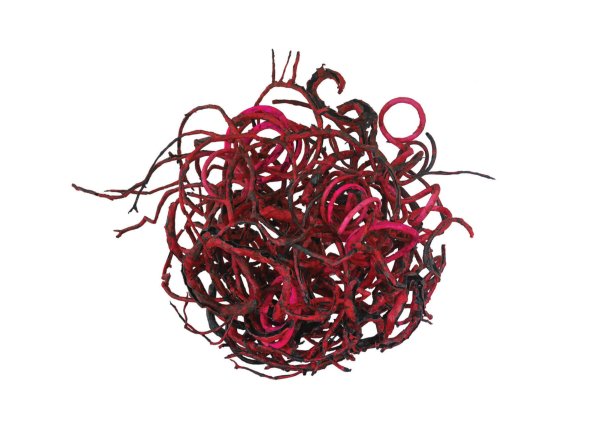
Papier, Draht; 150x120x 90 cm;
2018/2019; Palazzo Mora, Venedig;
© Ute Krautkremer.
The examination of traces of change and dissolution through time, nature and human intervention is an essential focus of Ute's artistic work. In the series “Strange connections” she combines naturally grown structures with artificial forms. Found branches are being transformed. The impressions, with their apparent authenticity, pretend that the original object still exists and can be recognized. Openings and cracks, grant true "insights" and expose the seemingly compact forms as merely enclosing shells. The interwoven structure resembles a network, in which everything is interconnected, even elements that actually do not fit into the natural context. Precisely in this way new levels of meaning are created. "Identity" arises through such connections and brings forth the freedom to engage in the unknown.
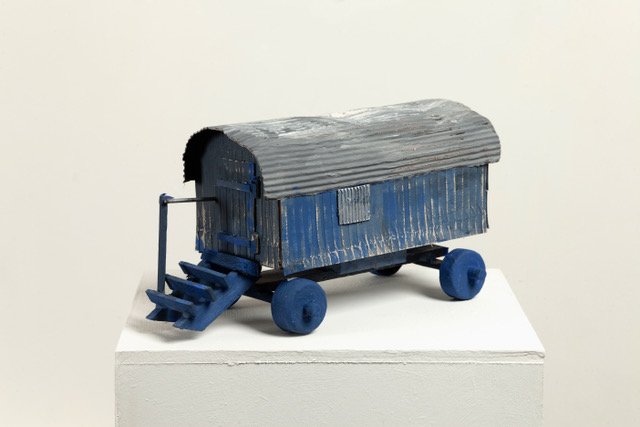
PAPER Pavillon; Venedig; Foto: David Bennett.
Jill's work reveals the sublime and the beautiful, the poetic and the resonant and often includes work from post-industrial, "poisonous" or "spoofed" environments. The sculpture series “Sheds”, presented in the PAPER Pavilion at the Venice Biennale, explores the overlooked and the hidden, celebrates the moment and improvises. She was inspired by the many improvised architectural constructions around Lancashire and is still fascinated by the materials used in the sheds and buildings.
In "Age of the Refugee", the works show moving nuances that refer to the idea of shelter and refuge and to the improvised human shelters built from available materials in shanty towns around the world. These works are asking for renewal and change, making us aware that life is unstable and transient, that it is constantly being built, destroyed and changed, due to the passing of time and ever evolving history.
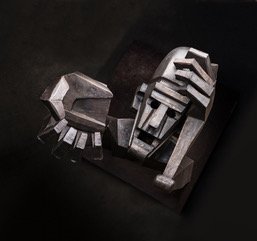
For many years Andreas was inspired to paint people in oils. He painted them in many states of mind: relaxed or curious, thoughtful, emotional or hopeless. However, his sculptures go one step further: they depict people in extreme situations. His artwork “Hilfe “ belongs to a cycle that deals with people's worries and fears. The request for help reveals more a natural reflex than an actual expectation of help. The unnatural cramping is an “expression of fear and despair.” a monument for devastated people.” How can we help you?”
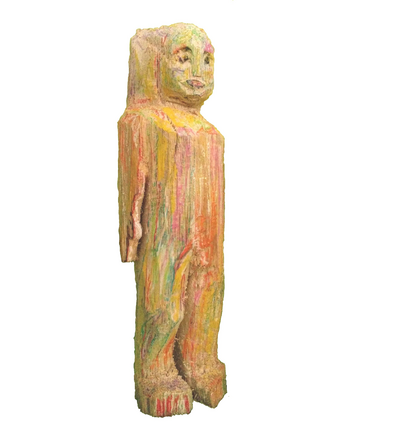
Her work shows a figure still stuck in the material, which seems to be enclosed in externalities. A liberation has already partly taken place. An arm and a considerable part of the body are already exposed. The head is free and so it can come to an exploration of its own being and the needs resulting from it. The work, “Unknown Man”, investigates the question of whether consumption, success and money, or the exploration of one's own inner being, can lead to show one's way out of personal and global crisis. The focus is to visualize and experience human structure, its challenges, and emphasizes the need for humans to constantly strive for happiness and fulfillment.
"Ever since I was a child, I've been absolutely excited about running”.
One morning, after several kilometers, I had a vision: I wondered how people might have moved here 100 years ago, from one place to another, between these wonderful old avenues of trees. I then questioned how will they move in the foreseeable future, if we humans eventually destroy ourselves, in say 100 years or so? Then probably only an unnatural materiality remains instead of these avenues of trees on which I walk and run so naturally. Sometime this particular morning I knew which material would survive me with certainty - the tree line and any green space. Rabbit wire – a sign of limitation. The restriction. The line. The fence. The deprivation of liberty. Landmark of any better vegetable garden. - Unbelievable. My working material.
"Since then Martine has processed thousands of meters of rabbit wire to create structures in nature and at the same time represent a break with the present situation. The trees and groves that make wind, light, rain and seasons visible, grew ever more clearly. She wants to raise questions, tell her story, called "Once upon a time...". And this story should continue like a fairy tale – and this year also in Venice.
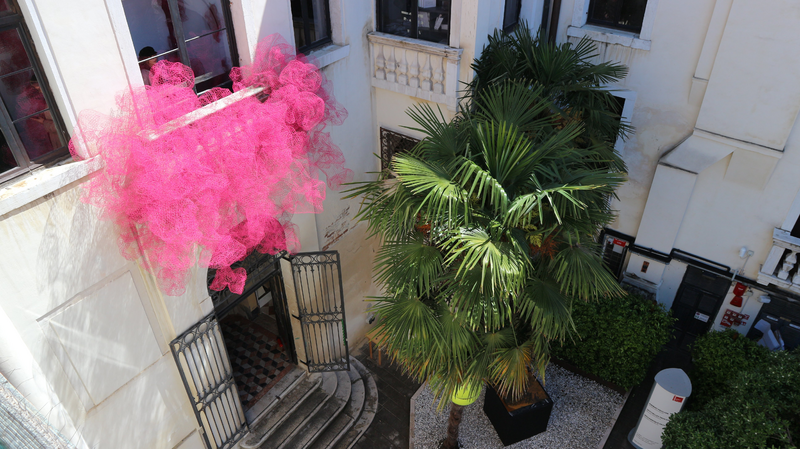
Feel like a visit? Then simply join us!
Our next art trip from 22nd to 25th August 2019 will take us to Venice. The Sculpture Network Experience offers individually designed guided tours. Join us and make your visit to Venice - an absolute highlight of your international art year 2019! Up until June 30 you can still benefit from our exclusive early bird discount. The registration deadline is August 1st, 2019.
Click here to gain access to the registration
PERSONAL STRUCTURES – Identities
European Cultural Centre Italien
Palazzo Bembo, Palazzo Mora und Giardini Marinaressa
Venedig (ITA)
11. Mai – 24. November 2019

Claudia Thiel is an art historian and likes to pose her questions to the subject area in a journalistic style.
Cover: Martine Seibert-Raken, Es war einmal... Unkel goes to Venice; Hasendraht beschichtet, Plexiglas; 780×480/360×240 cm; 2018/19; Palazzo Mora, Venedig; Foto: Theodora Shandé.
